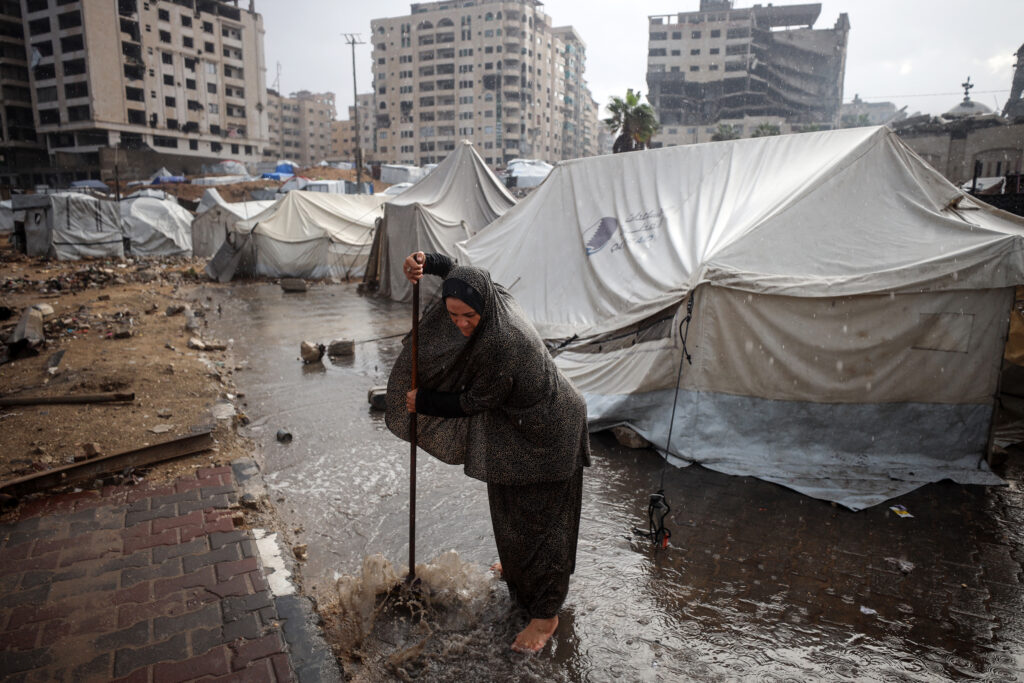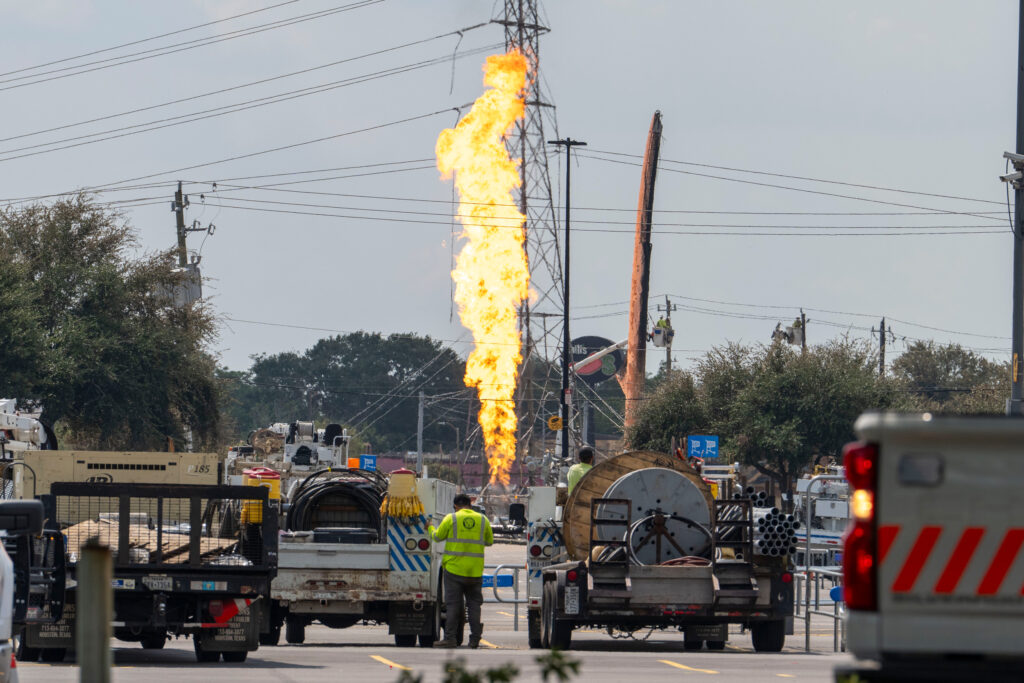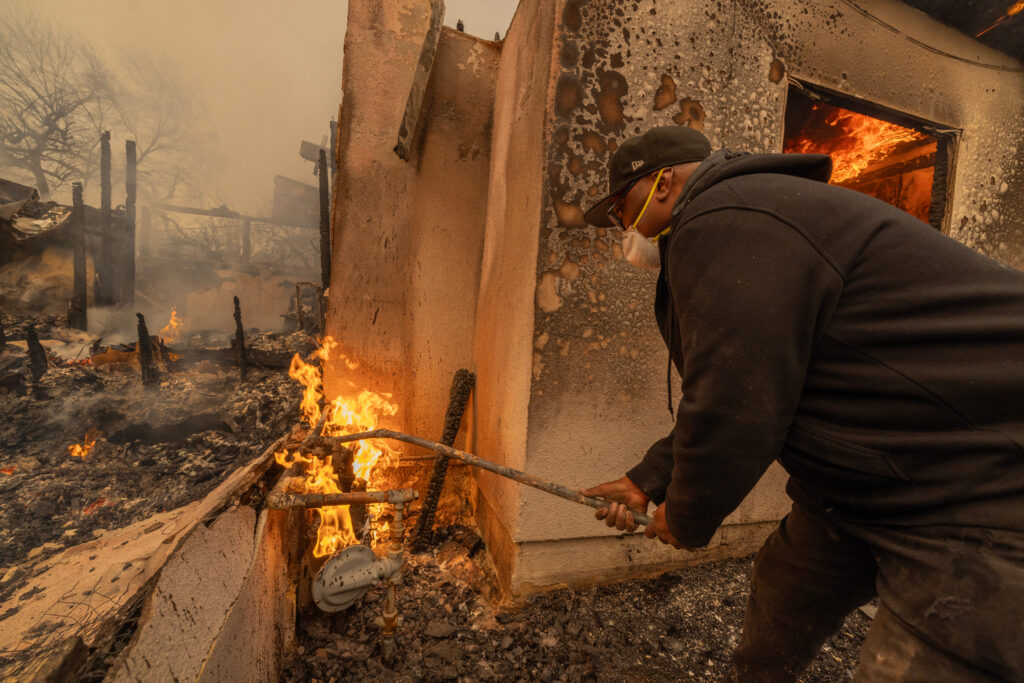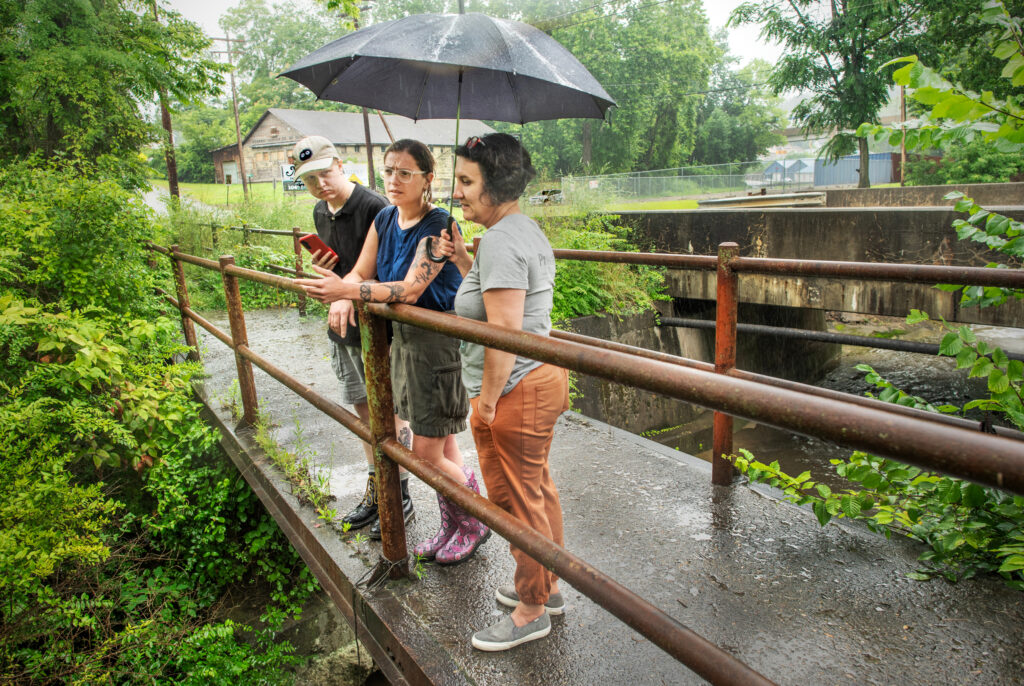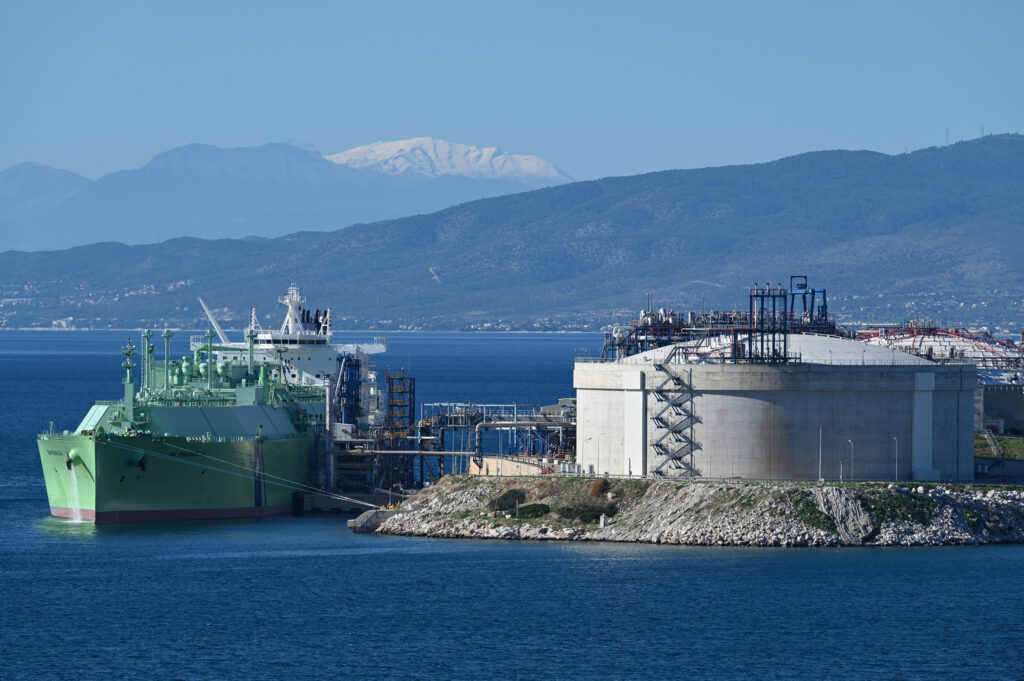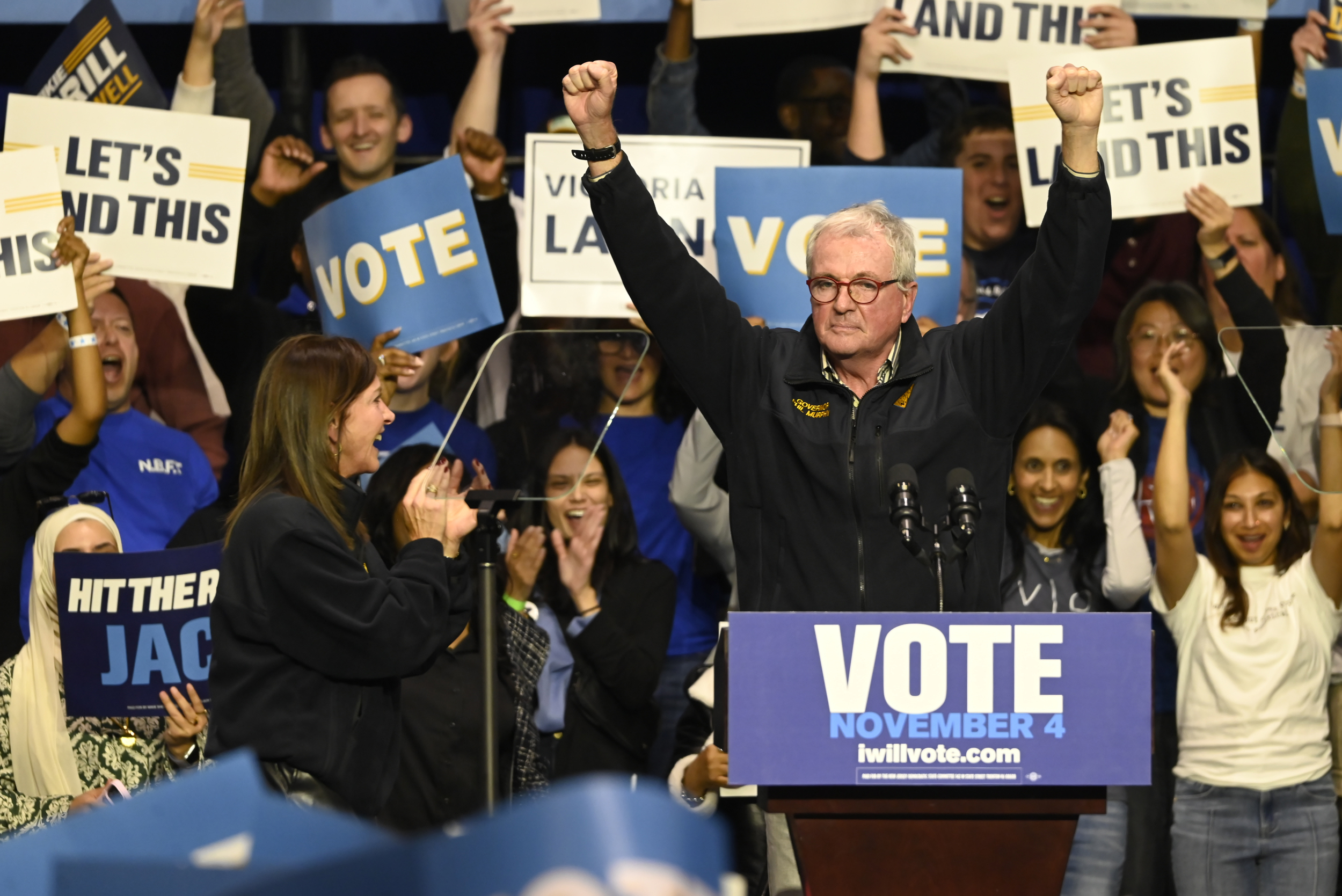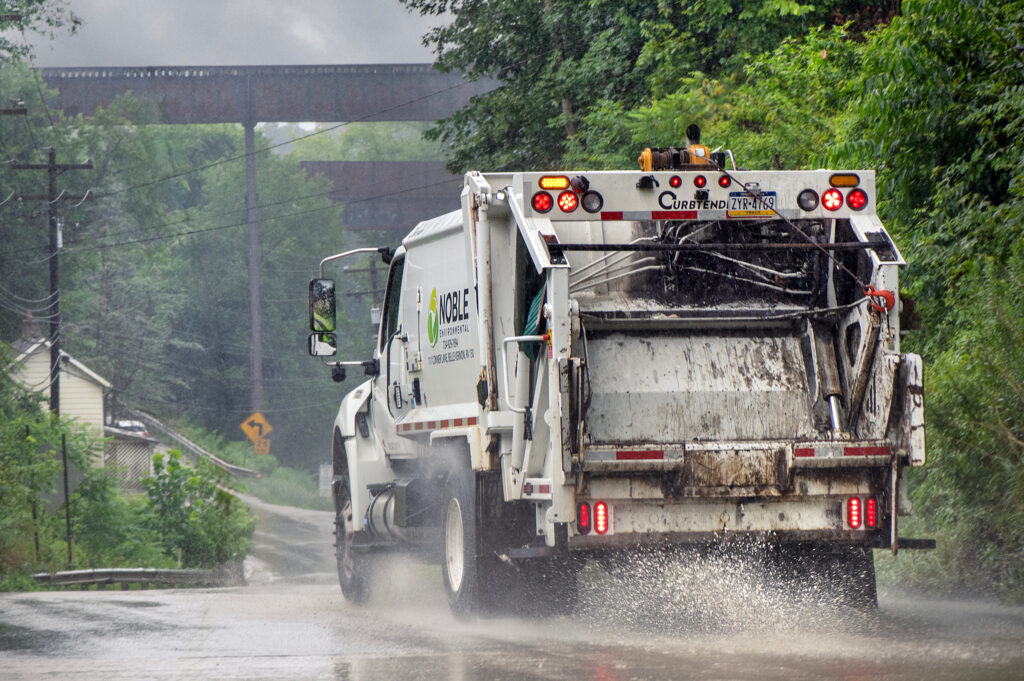One evening in January 2023, Indigenous leader Antonio Díaz Valencia and human rights lawyer Ricardo Arturo Lagunes Gasca vanished.
Earlier that day, the men had participated in a community meeting focused on the environmental impacts of a mega iron-ore mine that had roiled and divided nearby communities for years. After the gathering, the men climbed into a white pick-up truck near Aquila, Mexico, and headed for Lagunes Gasca’s home in a neighboring state.
But the men never arrived. The next day, their empty truck was found on the roadside, riddled with bullet holes.
Their disappearance—the men have never been found and no one has been held accountable—is one of more than 6,400 attacks on human rights defenders that took place from January 2015 to December 2024, according to a new report from the U.K.-based watchdog group Business & Human Rights Resource Centre.
“That’s close to two attacks every day over the past 10 years against defenders who are raising concerns about business-related risks and harms,” said Christen Dobson, co-head of the civic freedoms and human rights defenders program at the Business & Human Rights Resource Centre.
Human rights defenders are people who peacefully act to protect or promote human rights. The attacks tracked in the report include forced disappearances, killings, assaults, threats, judicial harassment and other acts.
Dobson, who co-authored the report, said the numbers are likely an undercount because many attacks are not reported publicly due to restrictions on civil society and the press. The Business & Human Rights Resource Centre includes in its count attacks on defenders that are documented by governments, news reports, nongovernmental organizations and in other publicly available sources.
Another reason for the undercount, according to Dobson, is that the journalists and researchers who document these attacks are themselves increasingly coming under attack.
Earlier this month, plainclothes military officers detained Cambodian environmental journalist Ouk Mao in his home. Mao, who has been physically attacked and threatened before for his reporting on illegal logging and other environmental crimes, is being held on unclear charges, according to the Committee to Protect Journalists.
The report tallied 279 attacks in Cambodia. That number doesn’t include Mao’s detention, which occurred after the time period studied. Researchers noted that in recent years, press freedom in Cambodia has sharply declined. The February 2023 shutdown of the Voice of Democracy, one of the country’s last independent news outlets, marked a major setback, the report said.
Today, news outlets in Cambodia are now largely controlled by entities linked to the government. When U.S. President Donald Trump in March defunded Voice of America, a U.S.-funded broadcast organization that covered Cambodia, the Cambodian government praised the move.
The Cambodian embassy in Washington, D.C., did not respond to a request for comment.
Worldwide, environmental and land defenders are particularly at risk—they made up three-fourths of the attacks counted in the report. Indigenous people like Díaz Valencia are also disproportionately targeted. The report said they were victims in about 20 percent of attacks, although they make up only 6 percent of the global population.
“We’re protecting our planet with knowledge, with courage and deep respect for the land, the skies, waters and cosmos,” said Heather O’Watch, a Nakota and Cree woman from the Okanese First Nation in Canada.
O’Watch, who also serves as a documentation and database officer at the U.S.-based nonprofit Indigenous Peoples’ Rights International, was speaking about the risks faced by Indigenous environmental defenders, a group prominently featured in the report. In Peru, for example, Indigenous people made up half of all human rights defenders who were attacked. Among them was Miguel Guimaraes Vasquez, a leader of the Shipibo-Konibo people and vice president of the Indigenous rights group AIDESEP, the Interethnic Association for the Development of the Peruvian Rainforest.
In October 2020, just a week after speaking at a virtual hearing before the Inter-American Commission on Human Rights where he condemned violence against Indigenous leaders, Guimaraes Vasquez received a death threat via WhatsApp. In 2024, following additional advocacy work on his part, assailants broke into Guimaraes Vasquez’s home, set it on fire and stole his belongings. On one of the walls, they wrote: “He will not live.”
Mining, agribusiness and fossil fuels were the sectors linked to the most reported attacks.
The report links the highest number of attacks, including judicial harassment, to five major business ventures: oil extraction in Uganda’s Lake Albert region, including construction of the East African Crude Oil Pipeline; the Inversiones Los Pinares iron ore mine in Honduras; the Dakota Access and Line 3 oil pipelines in the U.S. and Canada; and the Las Bambas copper mine in Peru.

The companies named in the report denied responsibility for the attacks, according to written statements provided by the Business & Human Rights Resource Centre.
Enbridge, a minority investor in the Dakota Access Pipeline and Line 3’s owner, said in a written statement provided to Inside Climate News that the company “supports the rights of individuals and groups to peacefully express their views and protest–-from the beginning of regulatory processes through construction and on-going operations.” The statement also said Enbridge has “engaged directly with both the UN Special Rapporteur on the Rights of Indigenous Peoples and separately the UN Special Rapporteur on the Rights of Human Rights Defenders with regard to Enbridge’s policies.”
The connection between business projects and those who carry out attacks on human rights defenders is often murky. Many of the defenders featured in the report were targeted after opposing specific mines, drilling operations or other business ventures.
In most cases, the perpetrators are never identified or brought to justice. When responsibility is established, the report found that government actors—such as police, military personnel, local officials and members of the judiciary—are most frequently involved.
“One of the common patterns that we’ve seen is that a business project will proceed without consultation with affected communities or without the free, prior and informed consent of Indigenous peoples,” Dobson said.
This story is funded by readers like you.
Our nonprofit newsroom provides award-winning climate coverage free of charge and advertising. We rely on donations from readers like you to keep going. Please donate now to support our work.
Donate Now
As a result, people will then exercise their right to protest and raise concerns about social and environmental risks related to the project. Then, police, military or security guards will attack protesters, either violently or by detaining or arresting them, Dobson added.
“This is a common pattern that we see, which, really, the root of this issue is that the company didn’t engage in proper, meaningful consultation,” she said.
Dobson and her co-author, Lady Nancy Zuluaga Jaramillo, a senior legal researcher and project coordinator at the Business & Human Rights Resource Centre, argue that attacks on human rights defenders and crackdowns on press freedom pose risks for investors. When those raising concerns are silenced, companies and financiers lose access to critical information about human rights abuses, raising the likelihood of operational, financial and reputational damage.
Judicial harassment featured in more than half of the 6,400 attacks documented. That includes strategic lawsuits against public participation, or SLAPPs—cases where companies or powerful actors file lawsuits to intimidate or drain the resources of critics. The report counted over 530 SLAPPs. Other forms of judicial abuse, such as arbitrary detentions, made up the remainder of the 3,310 cases involving legal harassment.
Women human rights defenders face unique and evolving threats, in part due to growing online harassment. The report shares an anonymized account of a female journalist who had been reporting on mining issues. Company officials visited her male relatives “to try to influence me to either retract or change the content of the articles,” the journalist said. People connected to the mining company also followed her, took photographs of her in her house and published them on social media.
“In the posts, they said I was hosting the person who was investigating the mining project in my house, suggesting I was providing sexual services,” the journalist said. “People wrote things
like, ‘She is a whore.’”
Children of women defenders have also been targeted as a way to pressure and intimidate their mothers, Dobson said.
In Mexico, women make up the majority of “buscadoras,” people who search for disappeared human rights defenders. Often driven by their roles as caregivers, these women seek justice for missing loved ones and often become targets of attacks themselves, according to Alejandra Gonza, director of the International Human Rights Clinic at the University of Washington School of Law.
Gonza, who is also the executive director of Global Rights Advocacy, a Seattle-based nonprofit that provides pro bono legal counsel in human rights-related cases, works with the families of Antonio Díaz Valencia and Ricardo Arturo Lagunes Gasca, the human rights defenders who were forcibly disappeared in Mexico.
She said cases like theirs persist, in part, due to rampant impunity.
The report documented 455 attacks in Mexico, with the mining sector linked to the most incidents and forced disappearances a common form of attack on environmental defenders. Gonza described a “perverse phenomenon” around these cases: a widespread denial that the problem even exists.
Mexicans, she said, call it “disappearing the disappeared.”
The report recommends that corporate leaders take stronger action to protect human rights defenders. It urges companies to publicly adopt zero-tolerance policies for attacks across their operations and supply chains, and to meaningfully engage with Indigenous peoples and local communities affected by their projects.
“Companies,” Gonza said, “need to start owning the problem.”
About This Story
Perhaps you noticed: This story, like all the news we publish, is free to read. That’s because Inside Climate News is a 501c3 nonprofit organization. We do not charge a subscription fee, lock our news behind a paywall, or clutter our website with ads. We make our news on climate and the environment freely available to you and anyone who wants it.
That’s not all. We also share our news for free with scores of other media organizations around the country. Many of them can’t afford to do environmental journalism of their own. We’ve built bureaus from coast to coast to report local stories, collaborate with local newsrooms and co-publish articles so that this vital work is shared as widely as possible.
Two of us launched ICN in 2007. Six years later we earned a Pulitzer Prize for National Reporting, and now we run the oldest and largest dedicated climate newsroom in the nation. We tell the story in all its complexity. We hold polluters accountable. We expose environmental injustice. We debunk misinformation. We scrutinize solutions and inspire action.
Donations from readers like you fund every aspect of what we do. If you don’t already, will you support our ongoing work, our reporting on the biggest crisis facing our planet, and help us reach even more readers in more places?
Please take a moment to make a tax-deductible donation. Every one of them makes a difference.
Thank you,






